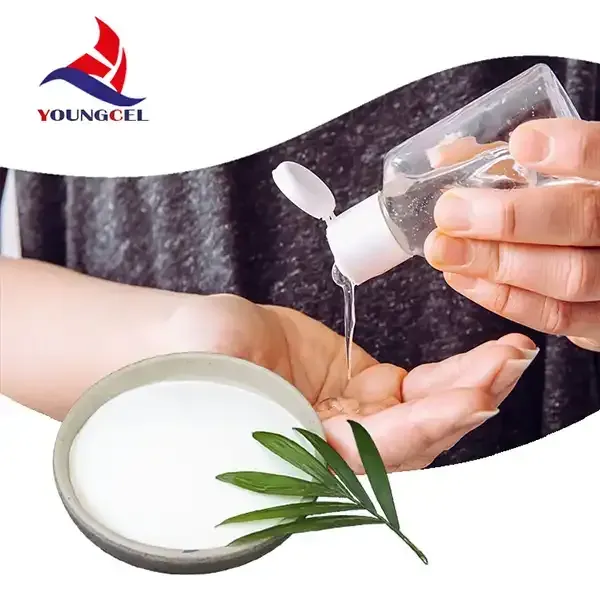Understanding HPMC Thickener Applications, Benefits, and More
Hydroxypropyl Methylcellulose (HPMC) thickener is a versatile and widely-used ingredient in various industries, especially in food, pharmaceuticals, and construction. It is a semi-synthetic polymer derived from cellulose, with properties that make it an ideal thickening agent, emulsifier, and stabilizer. This article aims to delve deeper into the characteristics, applications, benefits, and safety aspects of HPMC thickener.
Composition and Properties
HPMC is produced by reacting cellulose with propylene oxide and methyl chloride. The result is a white, odorless powder that is soluble in water and forms a gel-like structure when dissolved. The degree of substitution (the ratio of hydroxypropyl and methyl groups attached to the cellulose backbone) influences viscosity and solubility in water, making HPMC customizable for specific applications.
The thickening power of HPMC is due to its ability to increase the viscosity of aqueous solutions. It provides a unique combination of properties such as controlled viscosity, excellent water retention, and film-forming capabilities, making it suitable for various formulations.
Applications in Different Industries
1. Food Industry In food products, HPMC serves several functions. It acts as a thickener in sauces, soups, and dressings, improving texture and mouthfeel. Its emulsifying properties help maintain the stability of emulsions, preventing separation. Additionally, HPMC is often used in gluten-free formulations as a binder and texture enhancer, providing structure to baked goods.
2. Pharmaceuticals In the pharmaceutical sector, HPMC is commonly used as a controlled-release agent in tablets and capsules. Its viscosity-controlled, gel-forming nature provides a sustained release of active ingredients, enhancing medication efficacy. HPMC also serves as a stabilizer in topical creams and gels, providing consistency and improved application properties.
3. Construction The construction industry utilizes HPMC as an additive in cement-based formulations. It enhances workability, improves adhesion, and increases water retention in mortars, concrete, and tile adhesives. HPMC contributes to the overall durability and performance of these materials, making it a trusted ingredient in construction applications.
4. Cosmetics In cosmetic formulations, HPMC acts as a thickening and stabilizing agent in creams and lotions. It improves texture and provides a smooth application, enhancing the sensory experience of the product. HPMC is also used in hair care products and masks, offering adherence and effectiveness.
hpmc thickener

Benefits of HPMC Thickener
- Versatility One of the most significant advantages of HPMC is its versatility. It can be tailored to meet specific viscosity requirements across diverse applications, making it suitable for multiple industries.
- Non-Toxicity HPMC is regarded as a safe ingredient for use in food and pharmaceuticals. It is non-toxic, non-allergenic, and does not cause irritation, making it an excellent choice for sensitive formulations.
- Stability HPMC exhibits excellent stability over a wide range of pH levels and temperatures. This stability is advantageous when formulating products that require specific storage conditions.
- Improved Shelf Life In food products, HPMC can enhance the shelf life by preventing the separation of ingredients, thus maintaining product quality over time.
Safety and Regulatory Aspects
HPMC is considered safe for human consumption and use in cosmetics and pharmaceuticals. Regulatory bodies such as the FDA and European Food Safety Authority (EFSA) have approved its use as a food additive, categorizing it as Generally Recognized as Safe (GRAS). Furthermore, it is often included in the list of regulated ingredients by cosmetic and pharmaceutical authorities, ensuring safety in consumer products.
Conclusion
In summary, HPMC thickener is a valuable ingredient with diverse applications across the food, pharmaceutical, construction, and cosmetic industries. Its unique properties allow manufacturers to create stable, effective, and quality products while ensuring safety for consumers. As industries continue to evolve, the demand for multifunctional ingredients like HPMC will likely grow, driving innovation and development in formulation technologies. With its ability to improve texture, stability, and effectiveness, HPMC remains an essential component in modern formulations, proving its worth time and again across various applications.
-
Rdp Powder: Key Considerations for Wholesalers in the Building Materials IndustryNewsJul.08,2025
-
Key Considerations for Wholesalers: Navigating the World of Hpmc - Based ProductsNewsJul.08,2025
-
Hpmc Detergent: Key Considerations for WholesalersNewsJul.08,2025
-
Key Considerations for Wholesalers: China Hpmc For Tile Adhesive, Coating Additives, Concrete Additives, and MoreNewsJul.08,2025
-
Crucial Considerations for Wholesalers: Navigating the World of Construction MaterialsNewsJul.08,2025
-
Key Considerations for Wholesalers Sourcing Additive For Cement, Additive For Concrete, Additive For Putty from Additive Manufacturer Shijiazhuang Gaocheng District Yongfeng Cellulose Co., Ltd.NewsJul.08,2025




